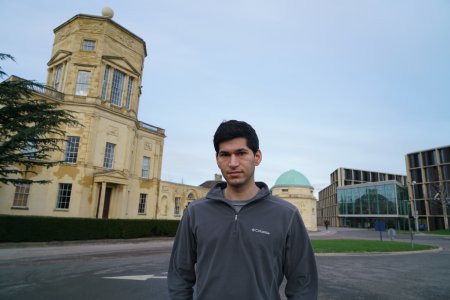Oxford Mathematician Jared Duker Lichtman explains his fascination and frustration with a conjecture that has puzzled mathematicians for years.
"The Erdős Primitive Set Conjecture centres around one key definition. A set of positive integers $A\subset \mathbb{Z}_{>1}$ is called primitive if no number in $A$ divides another. For example, the primes form a primitive set. More generally, for any $k\geq 1$ the set of numbers with exactly $k$ prime factors (counted with repetition) is also primitive.
The definition of primitivity is quite simple, so it forms a very broad class of sets and it is easy to construct many examples. An example of particular significance historically is the set of perfect numbers. Since Ancient Greece we say a number is perfect if it equals the sum of its proper divisors. For instance 6 is perfect since its proper divisors 1,2,3 sum to 6 itself. Perfect numbers have fascinated mathematicians for millennia, and it is a nontrivial fact that they form a primitive set.
We number theorists often think of the set of primes as a precious gem like a rare diamond. Similarly, we may think of the broader class of primitive sets like a larger treasure trove of jewels, including emeralds, rubies, and sapphires. Each primitive set has its own special properties, just as each gem has its own unique characteristics, like brilliance, colour, and rarity.
We know that the primes become quite rare further out along the number line. Technically speaking, the primes have density zero.
In 1935, the great mathematician Paul Erdős generalized this result considerably. He proved that every primitive set has (lower) density zero. In fact, he showed the stronger result
Theorem (Erdős, 1935): We have uniformly for all primitive $A$,
$$f(A)=\sum_{a\in A}\frac{1}{a\log a} < \infty.$$
His proof also interpreted these series $f(A)$ as encoding the size of density zero objects $A$. Rather, $f(A)$ roughly measures the density of the multiples generated by $A$.
Once we know these series converge, it is natural to ask for a maximum. In 1988, Erdős famously asked if the primes $\mathcal P$ are maximal among all primitive sets.
Erdős Primitive Set Conjecture (1988): We have $f(A) \leq f(\mathcal P)$ for all primitive $A$.
I immediately fell in love with the problem when I first heard it, and had been thinking about it ever since. Usually it can be difficult to say exactly why we feel the way we do about those dear to us. But in this case, the conjecture articulates precisely how the primes are special in a broader context.
For four years, I was wrestling with the conjecture and tried several approaches. After a while I revisited Erdős' original argument from 1935. Roughly speaking, it was very efficient with sets of numbers that were either prime themselves or had only small prime factors, and one could prove the conjecture in this special case. But if any composite numbers had a large prime factor, the Erdős argument became much cruder.
But then in the winter during lockdown, I realized one could leverage ideas from probability theory: morally, I proved that a primitive set cannot contain too many composite numbers with a large prime factor. Thus we can actually avoid many of the crude cases, thereby exploiting extra efficiency from the Erdős argument. From this key connection to probability, a solution finally emerged.
Theorem (L., 2022): The Erdős Primitive Set Conjecture is true.
After all is said and done, we now see another reason why the prime numbers are indeed special."
You can read Jared's proof here and watch him introduce the Conjecture in the short film below. You can also read a feature on Jared in Quanta magazine and a longer explanation of the work on Numberphile.


